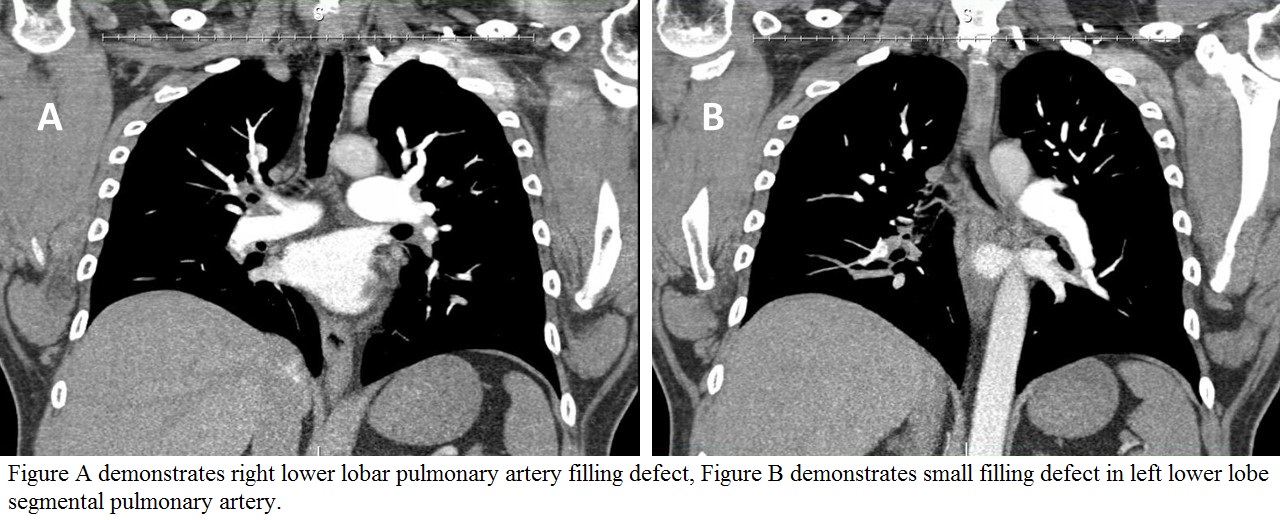Chronic Distal Pulmonary Embolism Treated with Acoustic Pulse Thrombolysis andTissue Plasminogen Activator Infusion: A Case Report
Juan B. Umana-Pizano, MD, Hunter M. Ray, MD, Stuart A. Harlin, MD.
University of Texas Health Science Center at Houston, Houston, TX, USA.
DEMOGRAPHICS: 56 year-old man with CPE treated 6 months prior with thrombolytic therapy was referred to our vascular clinic.
HISTORY: He had progressive dyspnea and increased right heart pressures despite adequate medical therapy. Computer tomography demonstrated right lower lobar branch CPE and small peripheral filling defects within the left lower lobe segmental arteries (Figure 1). New York Heart Association (NYHA) functional class was III.
PLAN: Treatments were discussed, and informed decision to undergo APAT was made with the patient. Under conscious sedation, in the angiography suite, vascular access of the right common femoral vein (RCFV) was obtained twice with 6-French sheaths resulting in two sheaths in the RCFV. The pulmonary artery was accessed. Pulmonary artery systolic pressure (PASP) at this time was 100 mmHg. Separate APAT EKOS catheters where advanced into each pulmonary artery. The patient was taken to the intensive care unit to continue APAT with Alteplase at 0.25mg/hour for the first 12 hours and then 0.125 mg/hour. 24 hours later PASP was 50-mmHg and both catheters were removed. Post-procedure echocardiogram demonstrated normal systolic function of the right ventricle. The patient was discharged home on oral anticoagulation. He was seen in the clinic 15 days post-procedure and noted improvement of his health with NYHA II. Two months later he still had impairment in life and work. After lengthy discussion, the patient decided to repeat APAT. PASP was 45mmHg at this time, after APAT it decreased to 25 mmHg.
DISCUSSION: Symptomatic chronic pulmonary embolism (CPE) is commonly treated medically or with pulmonary thromboendarterectomy. New evidence on the use of acoustic pulse aided thrombolysis (APAT) in chronic deep vein thrombosis and acute pulmonary embolism is promising. This case illustrates that APAT in patients with symptomatic CPE is a viable option for patients seeking nonsurgical intervention for this problem. This is the first report of APAT in this setting. Further studies are warranted. 
Back to 2019 ePosters
